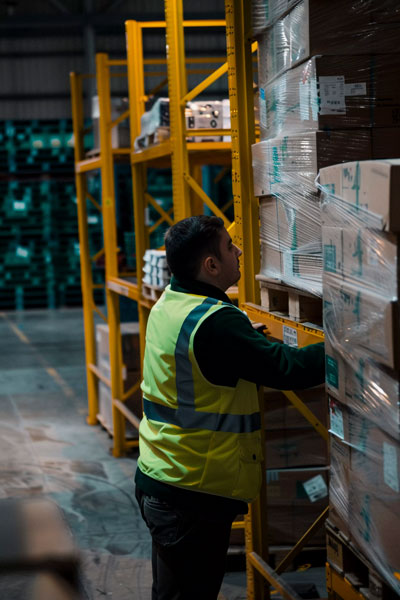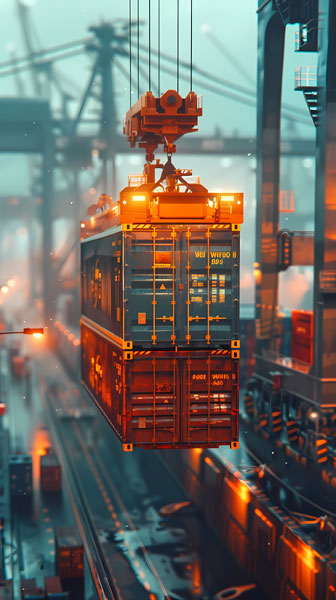
Iran Import Procedures: Comprehensive Guide for 2025
Iran Import Procedures: Comprehensive Guide for 2025
Iran’s strategic location and vast market potential make it a significant player in international trade. Understanding the intricacies of its import procedures is crucial for businesses aiming to penetrate this market. This guide provides an in-depth look into the Iran import procedures, ensuring compliance and efficiency in your trade operations.
1. Regulatory Framework
1.1 Governing Bodies
-
Islamic Republic of Iran Customs Administration (IRICA): Oversees customs regulations and procedures.
-
Ministry of Industry, Mine, and Trade (MIMT): Responsible for issuing commercial cards and overseeing trade activities.
-
Iran National Standards Organization (INSO): Ensures imported goods meet national standards.Iran Best LawyerGlobal Silkway
1.2 Legal Foundations
-
Export-Import Regulation Act: Primary legislation governing trade activities.
-
Executive Ordinance to the Export-Import Regulation Act: Provides detailed procedures and requirements.
-
Customs Affairs Law: Outlines customs duties, tariffs, and clearance processes.ESK Law Firm+5Iran Best Lawyer+5AP News+5MTROYAL+2GOV.UK+2Aramex+2
2. Pre-Import Requirements
2.1 Commercial Card Acquisition
To engage in import activities, businesses must obtain a Commercial Card from the MIMT. This card serves as a license to import goods and is essential for customs clearance.MTROYAL+7Iran Best Lawyer+7Aramex+7
2.2 Registration on the Comprehensive Trade System
Importers must register their business and intended imports on the Comprehensive Trade System (https://www.ntsw.ir). This platform streamlines the submission of necessary documents and facilitates communication with relevant authorities.Iran Best Lawyer+1ESK Law Firm+1
3. Classification of Goods
Iran categorizes goods into three main groups:
-
Permissible Goods: Items allowed for import without restrictions.
-
Conditional Goods: Require special permits or approvals.
-
Prohibited Goods: Items banned under Islamic law or national regulations.
Understanding the classification of your goods is vital to determine the necessary documentation and procedures.
4. Documentation and Compliance
4.1 Essential Documents
-
Commercial Invoice: Details of the transaction between buyer and seller.
-
Packing List: Breakdown of the shipment’s contents.
-
Bill of Lading/Airway Bill: Proof of shipment.
-
Certificate of Origin: Indicates the product’s country of origin.
-
Import License: Authorization to import specific goods.
-
Insurance Policy: Coverage details for the shipment.
-
Inspection Certificate: Verification of goods meeting required standards.
4.2 Standards and Certifications
Imported goods must comply with Iranian standards set by INSO. Depending on the product, additional certifications may be required, such as health certificates for food items or conformity assessments for electronics.shimaesmfood.com+2Global Silkway+2MTROYAL+2
5. Customs Clearance Process
5.1 Submission of Declaration
Importers must submit a detailed declaration to IRICA, including all necessary documents. This can be done electronically via the Electronic Packing List (EPL) system.Mefa
5.2 Inspection and Verification
IRICA may conduct physical inspections or laboratory tests to verify the goods’ compliance with national standards. The risk-based assessment determines the level of scrutiny:
-
Green Channel: Minimal inspection.
-
Yellow Channel: Documentary checks.
-
Red Channel: Comprehensive inspection.Mefa+1Region Plus+1AP News+1Global Silkway+1
5.3 Payment of Duties and Taxes
Importers are required to pay applicable customs duties and taxes based on the Cost, Insurance, and Freight (CIF) value of the goods.Aramex+1GOV.UK+1
5.4 Release of Goods
Upon successful inspection and payment, IRICA issues a release order, allowing the goods to enter the Iranian market.ESK Law Firm
6. Duties and Taxes
6.1 Customs Duties
Customs duties vary depending on the product’s classification under the Harmonized System (HS) Code. Rates can range from 5% to 75%.The International Trade Council+1MTROYAL+1
6.2 Value Added Tax (VAT)
A standard VAT rate of 9% applies to most imported goods. Certain items, like tobacco and fuel, may attract higher rates.GOV.UK
6.3 Other Applicable Taxes
Additional taxes may include:
-
Trading Profit Tax: Levied on specific goods.
-
Excise Duties: Applicable to luxury items.
-
Environmental Taxes: For products impacting the environment.GOV.UK
7. Special Economic Zones
Iran has established Free Trade Zones (FTZs) to promote trade and investment. Goods imported into these zones enjoy certain benefits:
-
Duty Exemptions: No customs duties for goods consumed within the FTZ.
-
Simplified Procedures: Streamlined customs processes.
-
Tax Incentives: Reduced or exempted taxes for businesses operating in FTZs.
However, goods moved from FTZs to mainland Iran are subject to standard import procedures and duties.shimaesmfood.com+3GOV.UK+3Global Silkway+3
8. Recent Developments
In 2025, Iran has introduced several measures to facilitate trade:
-
Digitalization: Implementation of the ASYCUDAWORLD system to streamline customs procedures.
-
Relaxation of Import Restrictions: Lifting bans on certain goods, including foreign cars and electronics, to boost revenue and meet consumer demand.
-
Enhanced Cooperation: Agreements with neighboring countries to improve customs processes and trade efficiency.GOV.UK+2Wikipedia+2Mefa+2AP News
9. Challenges and Considerations
-
Sanctions: International sanctions can impact trade activities and financial transactions.
-
Currency Fluctuations: The Iranian Rial’s volatility affects import costs.
-
Regulatory Changes: Frequent updates to trade regulations necessitate staying informed.Wikipedia
10. Conclusion
Navigating Iran’s import procedures requires a thorough understanding of its regulatory landscape, documentation requirements, and customs processes. By adhering to the outlined steps and staying updated on recent developments, businesses can effectively engage in trade with Iran.
For a personalized consultation or to inquire about import costs, please visit our price inquiry page.
